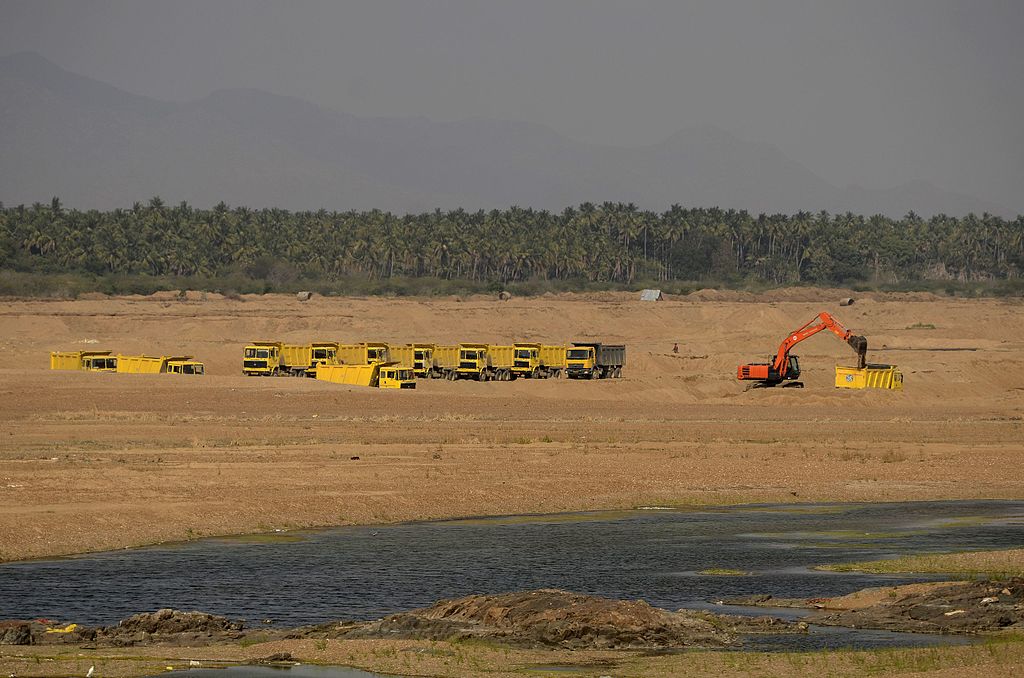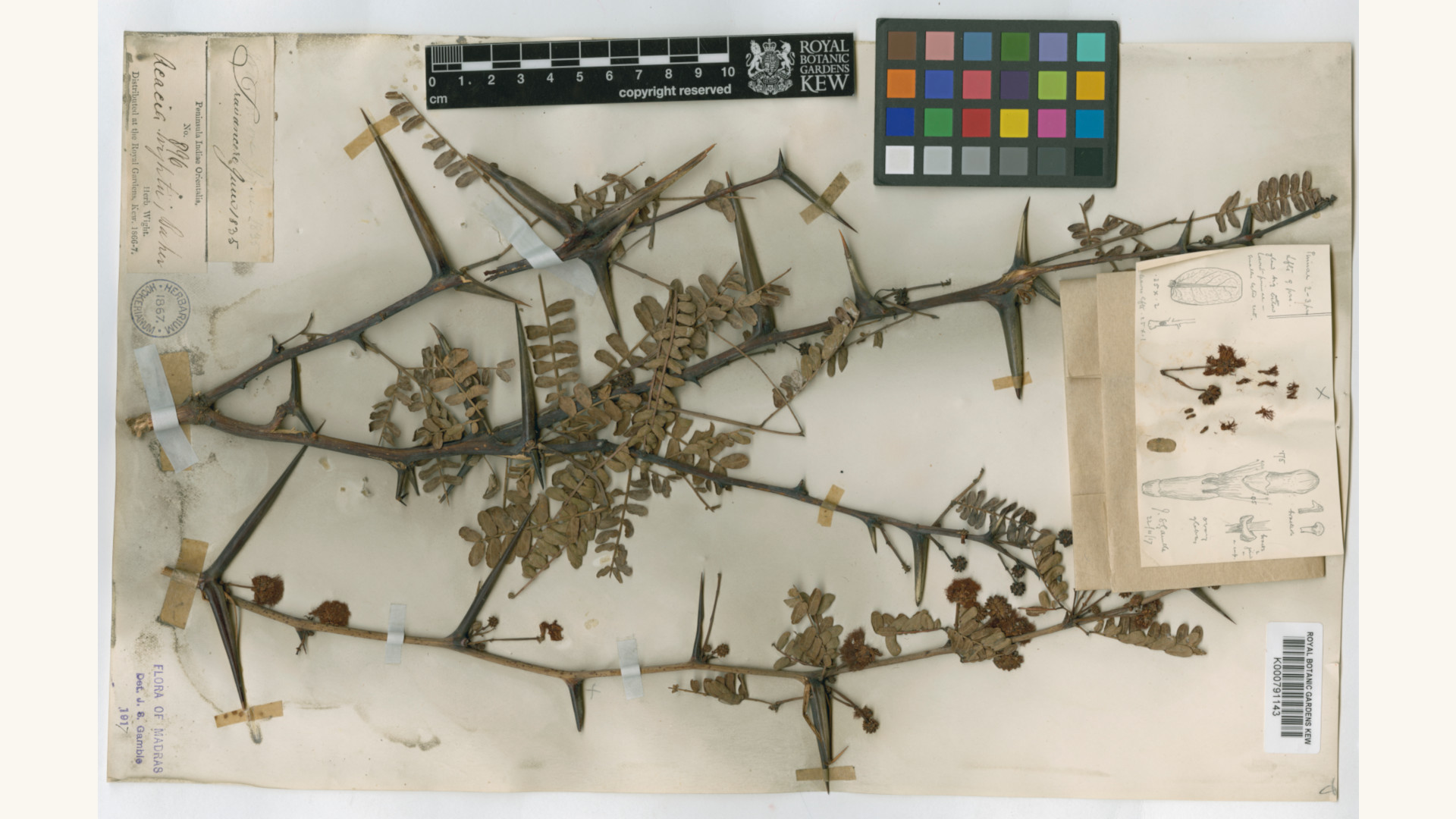Sand is big business — and a dangerous one.
Around the world illegal sand mining — often run by vicious “sand mafias” — has been linked to black markets, violence and even murder. It’s the shadier side of a multibillion-dollar industry with a voracious appetite for minerals used in everything from construction to electronics to toothpaste.
This criminal activity has already caused massive ecological problems wherever it occurs, and now the sand mafias appear to have contributed to something new: the extinction of a rare tree in coastal India.
According to a paper published in March in the journal Phytotaxa, an exhaustive search along the coasts of Tamil Nadu, India’s southernmost state, has failed to find any evidence of a rare legume tree known as Vachellia bolei. Researchers have declared the species is “possibly extinct.”
The paper itself blames “habitat destruction and other anthropogenic factors” for the possible extinction. That’s fairly general, but an email from the research team gets more specific.
“We strongly believe that sand mining, illegal felling of trees and conversion of coastal sand dunes for cultivation might be the major reasons for the possible extinction of Vachellia bolei,” write the authors, K. Sampath Kumar, K. Kathiresan and S. Arumugam.
The researchers conducted more than 100 surveys between 2012 and 2017 looking for Vachellia bolei and other local plants. As they write, it wasn’t always the easiest work. Illegal mining has eliminated many coastal sand dunes, causing severe coastal erosion, and “it is not even possible to survey some of the areas that are under the ‘control’ of these mafias,” they say. (They add that they never felt as though they were in danger, although they were blocked from exploring mining areas by workers who thought they were investigative journalists.)

The mafias aren’t alone in bearing the blame for damaging the local ecosystem. A number of other factors also threaten coastal plant species in Tamil Nadu, most notably “continuous and severe” pollution from a growing human population and rapid levels of development. “Mindless waste disposal all along the coastal habitats and into or near watercourses is rampant,” the researchers say. “We must remember that whatever pollution happening in the plains and the nearby hills ultimately reaches the estuaries and the sea. This also creates tremendous pressure on the fragile ecosystems.”

Other risk factors include coral mining — which has resulted in the shrinking or submergence of several nearby islands — illegal logging for firewood and other uses, dwindling freshwater flow into estuaries, climate change and possibly invasive species.
As a result of all of these threats, Vachellia bolei is not the only plant at risk in Tamil Nadu.
“This is just tip of the iceberg, as there are many more species vanished or vanishing,” the researchers write. They estimate that about 30 percent of the estimated 2,000 plant species along the coast have now become locally threatened. In particular, they point out, the number of mangrove species known to grow in the area has fallen from 30 to just 13.
The ecological cost of losing Vachellia bolei is hard to estimate. The species was only scientifically collected three times, and although its role in the ecosystem was never studied it was probably significant. The researchers note that other legume species from the Acacia genus serve to enrich the soil, sequester carbon, stabilize dunes and provide habitat to a variety of birds and pollinator insects. The plants’ nutritious pods are eaten by humans and cattle, while the bark, flowers and other parts have been tapped for their medicinal uses.
Could Vachellia bolei still exist? The paper indicates the tree would have been hard to miss during surveys due to its large size, “prominently nerved” leaves and spines with sharp tips. Still, the researchers tell me, there’s a “most remote” change that it still clings to life in the region’s sacred groves, which have a long tradition of protecting local botanical species. The groves were not covered in this study because they’re typically located away from the coast.
Whether illegal sand mining caused, or just contributed to, this extinction, the announcement is a reminder of what else we have to lose. The authors say they hope this research will serve as an “eye-opener” to bring attention to the problems in Tamil Nadu and lead to “prioritizing and conserving many other wild threatened coastal plants of the region — and thereby preserve the diversity of dependent insects, animals and microbes — in the near future.” More broadly, conservation groups have long warned that sand mining around the world threatens biodiversity and endangered species, and without action Vachellia bolei may not be the last to disappear.
“I’m not surprised” by this extinction, says Kiran Pereira, founder of SandStories, an initiative that talks about the need to better manage the world’s consumption of sand. “I am saddened, but I would like to remain hopeful that we can turn the tide at least for the other species that depend on sand.”
![]()



1 thought on “Legume Gone: The Shocking Reasons for a Tree’s Extinction in India”
Comments are closed.